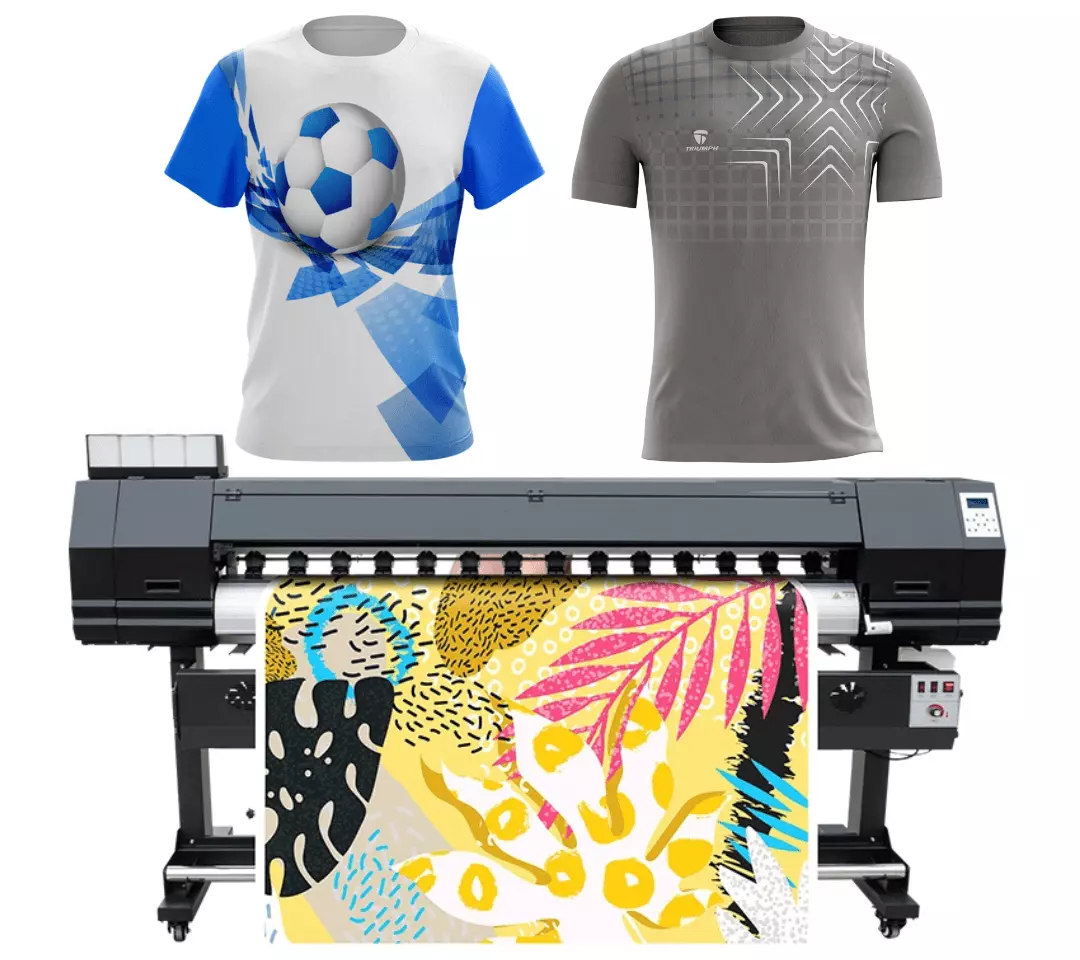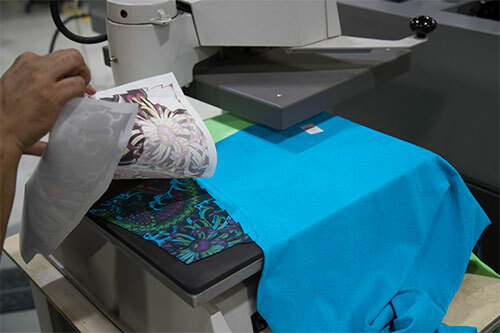Discovering the Advantages of Sublimation Printing for High-Quality Fabrics
Discovering the Advantages of Sublimation Printing for High-Quality Fabrics
Blog Article
Advancements in DTF Printing: How It's Transforming the Market
The fabric printing industry is undertaking a considerable change, driven by the innovative innovations in Direct-to-Film (DTF) modern technology. With exceptional ink formulas, enhanced film and glue modern technologies, and the assimilation of automation, DTF printing uses vivid, resilient prints on a selection of materials, meeting the raising demand for customization.
Developments in DTF Modern Technology
Advancing quickly, DTF (Direct-to-Film) printing technology has gone through significant enhancements that are transforming the fabric sector. One of the most noteworthy advancements is the improvement in print quality. Modern DTF printers utilize sophisticated ink formulas that lead to dynamic, sturdy prints with high resolution and color accuracy. These inks are particularly crafted for compatibility with various textile types, guaranteeing consistent quality despite the product.

Furthermore, improvements in film and adhesive innovations have actually boosted the total application procedure. New films use better elasticity and bond, enhancing the sturdiness and washability of the printed styles - screen printing. This ensures that the prints keep their integrity and vibrancy even after several laundries
Last but not least, ecological factors to consider have actually prompted the advancement of eco-friendly DTF solutions. Manufacturers are progressively taking on lasting practices, such as making use of recyclable movies and water-based inks, aligning with global initiatives to lower the market's ecological footprint.
Benefits Over Standard Methods
When contrasting DTF printing to typical approaches such as screen printing and direct-to-garment (DTG) printing, a number of distinct benefits arise. heat transfer vinyl printing. Among the most considerable benefits is its adaptability in material compatibility. Unlike screen printing, which commonly requires details material kinds, DTF printing can be used to a more comprehensive array of products, consisting of cotton, polyester, and blends, without endangering print top quality
Another notable benefit is cost-effectiveness, especially for small to medium-sized orders. Standard screen printing becomes financially feasible only at greater quantities due to the configuration expenses involved. In contrast, DTF printing eliminates these configuration costs, making it much more economical for smaller sets and one-off designs.
Additionally, DTF printing stands out in longevity and washability. In addition, DTF printing uses faster turnaround times.

Enhanced Design Abilities
DTF printing provides boosted layout capacities that establish it apart from standard printing approaches. The procedure includes publishing a layout onto an unique film, which is then transferred to fabric.
Additionally, DTF printing supports a vast range of textiles, including cotton, polyester, blends, and even non-textile substrates. This versatility opens up doors for innovative applications in varied industries such as fashion, home style, and marketing items. Unlike screen printing, which can be restricting as a result of shade splitting up and stencil creation, DTF printing simplifies the process, making photo-realistic and multi-color designs more accessible.
In addition, DTF printing stands out in accomplishing consistent color accuracy and vibrancy. This is crucial for brand consistency and meeting customer expectations. The innovation additionally supports special results, such as glow-in-the-dark components and metal surfaces, better expanding artistic opportunities. Fundamentally, DTF printing empowers designers to press the limits of creative thinking, providing visually stunning results that were formerly unattainable.
Price and Time Efficiency
One of the notable benefits of DTF printing hinges on its expense and time efficiency, making it a preferred choice for several organizations. By removing the requirement for screen arrangements and comprehensive pre-production processes, DTF printing considerably reduces preliminary expenses. Unlike standard techniques that call for considerable financial investment in screens and configuration times, DTF printing allows for direct application onto various products with minimal preparation. This decrease in arrangement time equates into faster manufacturing cycles, allowing companies to accomplish orders more swiftly.
Furthermore, DTF printing excels in creating short runs and personalized orders cost-effectively. The capacity to produce top notch prints without the requirement for large volume dedications reduces waste and enhances resource appropriation. This adaptability is specifically useful for little services and start-ups that go to this website might not have the funding to buy large manufacturing runs.
In terms of functional efficiency, DTF printing's streamlined workflow boosts overall performance. The innovation's compatibility with a wide variety of materials and substratums better broadens its application extent, decreasing the need for numerous printing systems. Services can accomplish a faster turnaround time, enhancing consumer contentment and competition in the market. Therefore, DTF printing stands out as a transformative solution in the printing market.
Future Trends in DTF Printing
Expecting future patterns in DTF printing exposes a landscape marked by rapid technological advancements and boosted market demand (DTF printing). One substantial pattern is the integration of expert system (AI) and artificial intelligence formulas to optimize print quality and streamline operations. AI-driven systems can forecast possible problems and adjust settings in real-time, making certain consistently top notch result
Furthermore, improvements in lasting materials and green inks are anticipated to acquire traction. As ecological problems come to be extra pressing, the sector is likely to see a change towards safe and eco-friendly inks, reducing its eco-friendly impact.
Customization and customization will likewise play an essential function. With the expanding consumer need for special, personalized items, DTF printing technologies are developing to provide even more detailed and in-depth customization choices. This fad is supported by boosted software program services that permit even more complicated and innovative designs.
Finally, the combination of DTF printing with various other electronic systems and shopping services will become extra seamless. This connection will certainly enable companies to provide on-demand printing solutions straight to customers, additionally driving development in the industry. These fads collectively highlight a future where DTF printing not just fulfills but goes beyond the advancing demands of the marketplace.
Conclusion

When comparing DTF printing to traditional techniques such as display printing and direct-to-garment (DTG) printing, numerous distinctive benefits arise. Unlike display printing, which often requires specific material kinds, DTF printing can be applied to a more comprehensive range of materials, including cotton, polyester, and blends, without jeopardizing print high quality.
DTF printing offers enhanced style capabilities that establish it apart from conventional printing techniques. Hence, DTF printing stands out as a read more transformative option in the printing sector.
Developments in DTF printing substantially improve the textile printing market by offering premium print versatility, performance, and quality.
Report this page